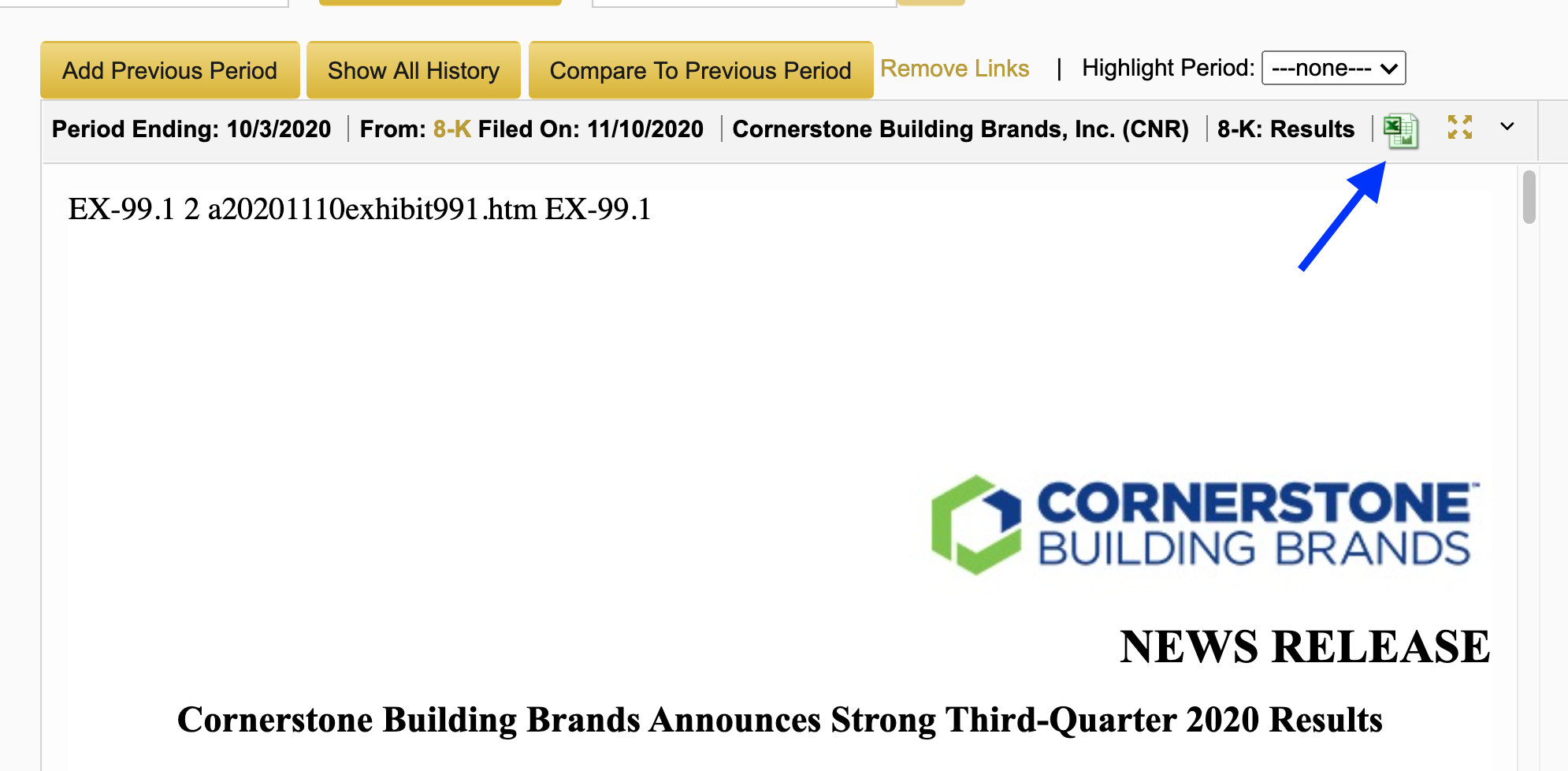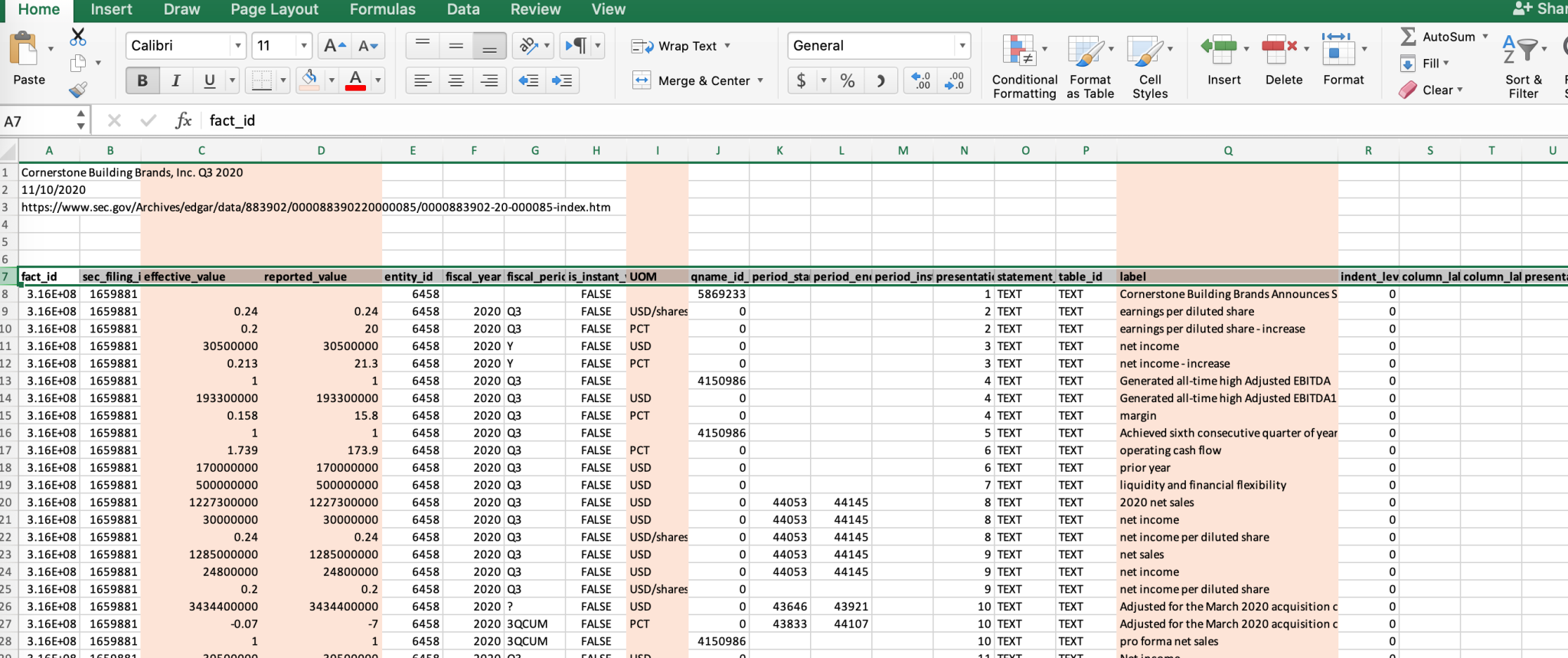Good news for all you data fanatics, eager to export yet more corporate disclosures into Excel so you can perform whatever analysis you’re hoping to do: Calcbench has added new capability to let you pull data from earnings releases.
Here’s how it works.
First, you need an earnings release. Perhaps you have one because you’ve set up your Calcbench email alerting functions and been notified that one of your favorite firms just filed an 8-K earnings release; or maybe you were skimming our Recent Filings page and a firm’s release caught your eye. We randomly selected Cornerstone Building Brands ($CNR), which filed its latest earnings release on Nov. 10.
Anyway, you have the earnings release displayed on your screen. What then? Look for the small Excel icon along the top of the main display panel, next to the firm’s ticker and the ‘8-K: Results’ descriptor. See Fig. 1, below; we’ve pointed to the icon with a blue arrow.

When you click on that icon, an Excel spreadsheet will download with all the earnings release data organized into neat rows and columns. It will look something like Figure 2, below:

There’s a lot going on in that spreadsheet, so let us explain. Some of the columns track details that might not be urgent to financial analysts, such as tag identifiers or Securities and Exchange Commission filing codes. In Figure 2, we shaded in orange the columns that are most important to financial analysts. Those columns won’t be shaded in your own download, but some examples include:
- Effective value, which is the data expressed as an actual numeric value. For example, something that might display as 21.3 percent to us humans has an effective data value of 0.213.
- Reported value, which is that number gussied up for human consumption: 21.3, since in the filing it will be reported as a percent.
- UOM, which stands for “unit of measurement.” You might see “USD” for dollars, “PCT” for percentage, and so forth.
- Label, which is what the disclosure represents: net income, increase in net income, pro forma net sales, and so forth.
Once you have that data in Excel — well, what you do with it next is your choice. Calcbench simply strives to provide all the data you want, in a manner that lets you use the data however you want. This is one more step toward our goal. Enjoy!